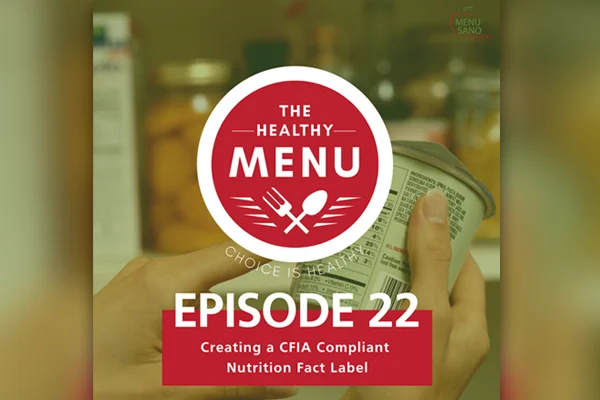In Episode 22 of the Healthy Menu Podcast, we’ll be discussing creating a CFIA-compliant nutrition fact label. Featuring Christine Billinger, Design & Marketing Manager.
Light Transcript of the Podcast
Christine will talk about nutrition fact label exemptions, rules to remember when displaying labels, changes, and more.
A nutrition fact label is designed to reflect the most up-to-date recommendations from each country’s respective governing body regarding the nutrition facts of certain foods. The mandated contents of a label are routinely updated and makes it easier and more accessible for consumers to understand the nutritional value of the food they are buying and make healthier and more informed choices about their diets.
It can be challenging to ensure that you as a food and beverage manufacturer are remaining compliant and keeping up with the latest guidelines.
K: So tell us, Christine, do all food products require a nutrition facts label?
C: They don’t actually, there are some foods that are exempt from requiring a label, for example, alcoholic beverages with the content of more than 0.5% wouldn’t need a label. Lots of fresh produce or single-ingredient meats and fish or if you’re just buying chicken breast or a steak you typically won’t see a nutrition label on that.
Things like a grocery store that makes a sandwich which is sold as a single serving – it won’t need a label. That is a little bit different in Ontario; so Ontario – they do have menu labeling legislation if you have 20 or more locations then you would be required to provide some caloric information.
K: So what do the nutrition facts labels really need to show to the consumer?
C: The labels have minimum mandatory requirements. For example in Canada, you would want to show the calories, total fats, and then you would also have saturated fats, trans fat, carbohydrates, fibers, and then there’s protein, cholesterol, sodium, potassium, calcium, and iron.
References:



















